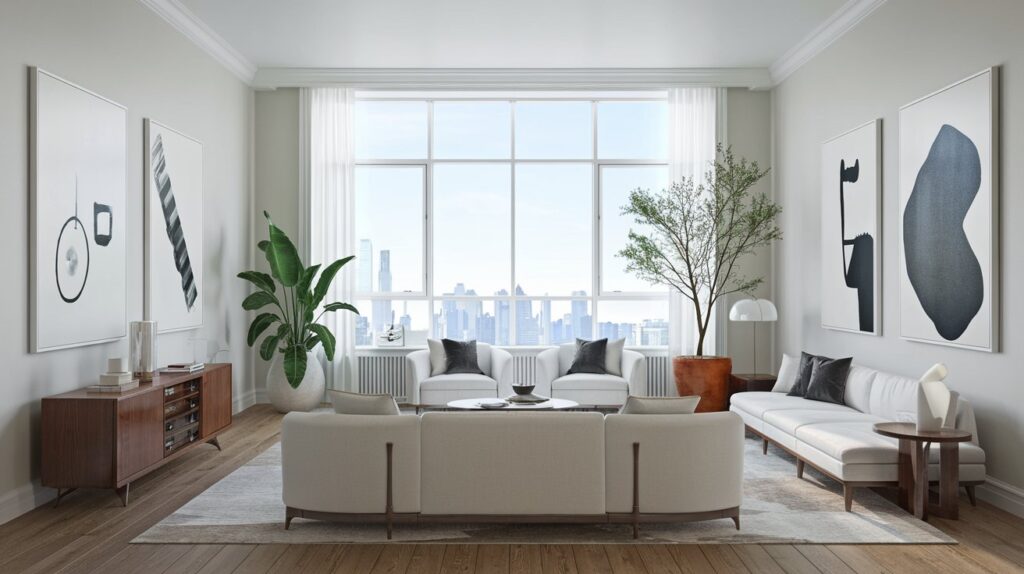Minimalism as a form of interior design has always been a classic. It lets us simplify and streamline our busy lives, providing a way to focus on the essentials and not get caught up in messy systems of support hiding beneath the surface. It’s also an approach that can have problems synergising with our increasing need for high technology.
High-tech devices and systems have become so necessary that they’re near inescapable. From chargers to cables and the various boxes we use to control our homes, each one of these conflicts with the minimalism ideal. There are ways to combat this truth, however, for those willing to commit to the work.
Mental and Physical Benefits
If you aren’t already sold on the idea of minimalism or are considering exploring what it has to offer, understand that it’s more than just a style, it’s an approach to living that produces serious, appreciable benefits. These begin with our mental spaces, owing to how clutter and mess can have negative effects on our thinking patterns.
This happens because we don’t think entirely internally. Instead, physical space acts as a kind of staging ground for our thoughts. The cleaner and clearer our space is, the more mental room we have to work with. Since keeping space clear is a fundamental aspect of minimalism, the approach can provide aid in helping us stay productive and in a positive frame of mind.
Additional benefits can also come courtesy of any physical modifications you make to your home. Properly installed and managed, efforts to aid minimalism are reflected in home valuation systems, raising the prices you can expect if you later choose to sell. This isn’t just with slower traditional real estate sales systems, either, as modern faster options which let you sell a house for free will see similar advantages. Alongside no hidden fees and free cash offers, the minimalist style can help with your final sale, adding another reason to consider this pursuit.
Changing What You Have
Since you likely already own a huge range of high-tech devices in your home and you don’t want to replace them with smaller form-factor models, we can start with a simple walkthrough of your home. Take a notepad with you, and record every piece of tech that bothers you or which looks unattractive.
Which cables get in your way, which systems lie in an unattractive place, and where have you taken shortcuts in installation that you can no longer accept?
The best idea from here is to start small and work on ways to collect high-tech devices into centralised areas whenever possible. Instead of having charging cables all over the house, for example, consider just one or two dedicated charging areas.
Choosing where technology should be concentrated is best managed by looking at surrounding furniture to explore how modifications might help you hide unsightly systems. If you have drawers against some sockets, it’s a simple matter of cutting holes in the back of the drawers and running the cables through to hide them inside.
This idea of adding and building hidden compartments into household items forms the basics of tech minimalism, letting you conceal items as small as a router to something as large as a TV. Again, we would suggest starting small, especially if you’re not the most experienced in DIY work, so you can get comfortable and work your way up to more complicated projects.
In some cases, you might consider more drastic approaches when it comes to wiring, installing new sockets or even running internet cable through your wall. While this will be more expensive, it helps you choose exactly where you can and want to hide items, so it’s worth considering.
Another potential approach is to consider purpose-built minimalism tech when purchasing new items for your home. It’s now possible to buy nightstands with built-in speakers, for example, or coffee tables offering integrated wireless charging stations. These will help in further minimising your visible tech footprint, so don’t forget to check them out.
Minimising the clutter around your home isn’t a one-off project you can finish in a weekend; it’s an ongoing process. You’ll need to balance your budget against your space, what you can realistically move, what your skill and knowledge allow you to do, and what new platforms are available to help you. It’s all about incremental changes, where you can look back a year from now and be amazed at how far you’ve come, and the ideas and approaches you now understand that you never could before.

